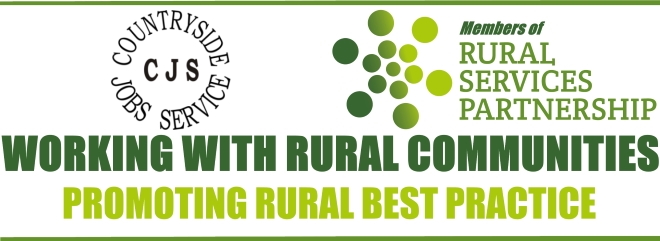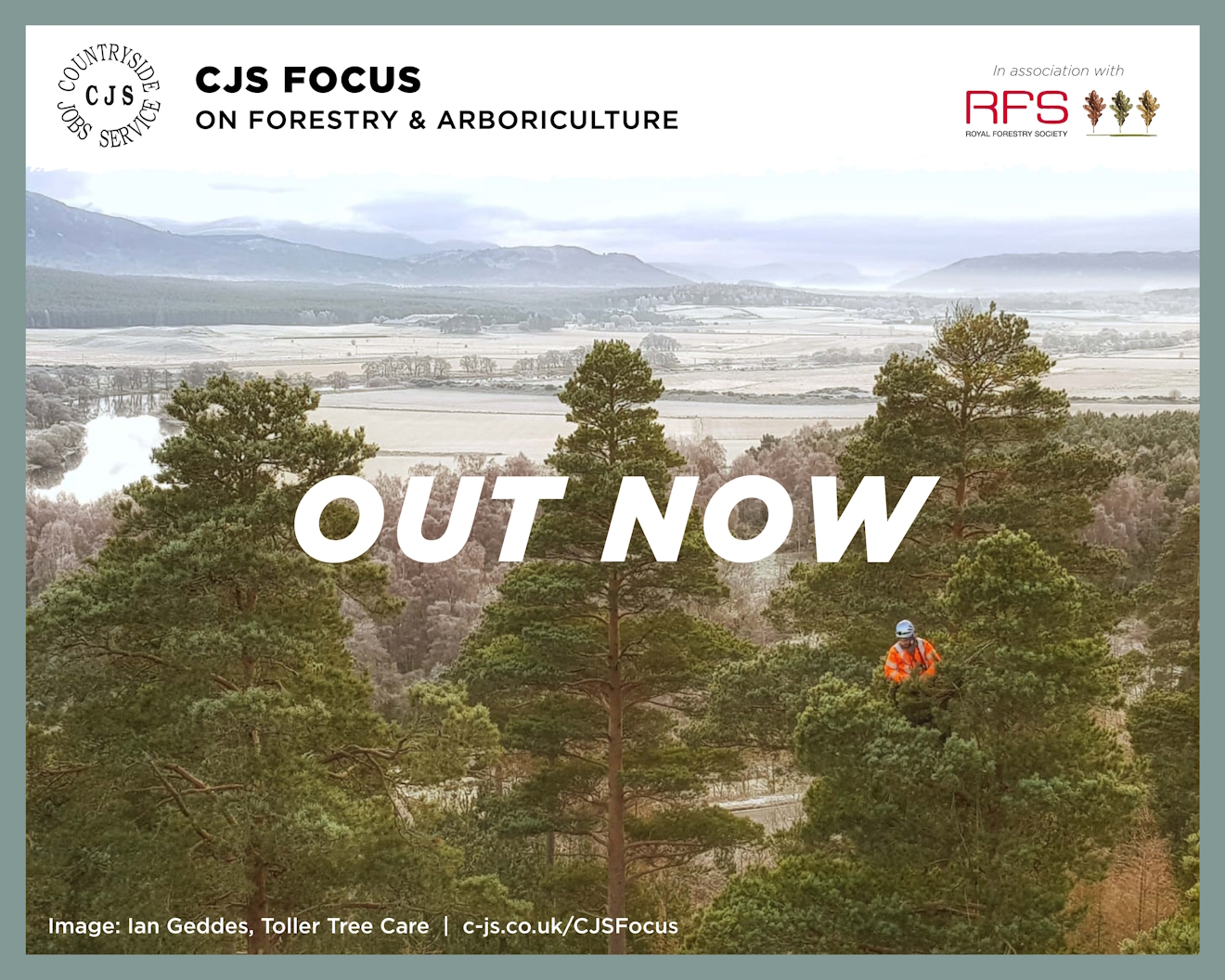T: 01822 851370 E: [email protected]
Visit RSN Survey about life in rural England to find out more.
CJS Focus on Forestry and Arboriculture
 “It is widely acknowledged that as the Forestry and Arb sectors continue to grow, we are facing challenges finding people with the right skills and experience to fill these vacancies”, so says Becky Wilkinson, RFS Learning & Outreach Manager in the lead article Growing Future Foresters. The article opens by offering some advice for young people looking for their first job in the industry: “our number one piece of advice is always – get a driving licence” saying that you can’t: “safely transport a chainsaw on a bike and you certainly can’t tow a chipper with it!”
“It is widely acknowledged that as the Forestry and Arb sectors continue to grow, we are facing challenges finding people with the right skills and experience to fill these vacancies”, so says Becky Wilkinson, RFS Learning & Outreach Manager in the lead article Growing Future Foresters. The article opens by offering some advice for young people looking for their first job in the industry: “our number one piece of advice is always – get a driving licence” saying that you can’t: “safely transport a chainsaw on a bike and you certainly can’t tow a chipper with it!”
Becky also looks at what the industry can do to help, suggesting that they consider taking on apprentices, reaching out to colleges to see what they offer. The question of relying on volunteer labour is addressed with a suggestion to consider providing pathways on from volunteering to paid work. Becky finishes her article saying: “As a sector, we can all do more in giving advice to the young people who reach out to us about how to get into the sector and increasing the number of pathways in for them.”
Dr Rob Hawkins, Senior Education & Outreach Officer at the ICF says: “The importance of trees has become increasingly evident in recent years”, and as such it’s a great time to get into the sector. As he says: “Long gone are the days of the stereotypical image of a burly lumberjack wielding a chainsaw” and although forests are still managed for timber production the industry has changed and now offers a diverse range of roles from forest pathologist to arboriculturalist, you’ll also find ecologists and even drone pilots (carrying out aerial surveys) working among the trees. He continues: “There are an increasing number of ways to become a tree professional, there is no right way or wrong way, and many of the options are designed with flexibility in mind, and routes do vary depending on where you reside in the country.” Before giving a detailed insight to many of these routes, from new starters to career changers.
As Dr Hawkins says the sector has changed significantly and Russell Horsey at Treeplotter concurs saying: “Technology is moving at pace across all sectors including our own” and asking if the sector is keeping up? He wonders if the lack of technology is “stopping the sector encouraging more younger people into the sector and slowing us down? Imagine yourself as a new entrant searching for a career or doing work experience only to be given a pen, paper and a weather writer, it’s not a great look.” He explains that technology is now more agile working across your devices meaning you only need to enter the details once whether that’s tree mapping or scale of canopy. There’s another advantage too, by having the data easily accessible members of the public can help out too. Using Birmingham Tree People as an example he demonstrates how these lovely volunteers run the UK’s largest Urban Forestry Volunteer Scheme to manage Birmingham’s Urban Forest.
When did you last check your climbing ropes? Or carry out maintenance on your chainsaws? Is your helmet the right size? These are all considerations for carrying out tree management up in the canopy. Gillon Laidlaw of Arbsystem offers practical advice to Ensure the Day Ends Well when working at height. Health and safety is frequently maligned but working at height is a fundamental aspect of forestry and arboriculture which comes with inherent risks that require careful management. Beginning with a comprehensive risk assessment right through to Emergency Planning covering training and certification and the use of the right PPE as well.
When you think of a forest do you imagine the vast acres of Sherwood or Kielder? But have you ever considered an urban forest? Ruthe Davies of the Association of Tree Officers says: “as a tree officer you don’t just manage trees – you create and implement a dynamic local tree strategy to transform the urban landscape.” Sculpting an Urban Forest isn’t just about the trees you see today but also about building a legacy, creating blue-green networks weaving the entire area together. However, work is more than trees, wildlife and ecology, Ruthe says “it’s about community” encouraging residents to engage with the urban forest. If you love trees and you love people then this might just be the job for you, Ruthe says: “There’s a serious skill shortage in the arboricultural profession which means there are many opportunities. Jobs are going vacant long-term, or end up being done by people who don’t have the knowledge to do them properly.”
As this edition is very much focused in on careers in the tree sector there are three job profiles too:
- Ian Geddes, Arborist & Director at Toller Tree Care Ltd
- Andrew Sowerby, Chartered Forester with Pryor & Rickett Silviculture, and
- Will Simonson, Principal Agroforestry Researcher at the Organic Research Centre
If you’d like to read more or if we’ve whetted your appetite to join in then click through to see CJS Focus in full
 |
Help for new graduates and students
There is a treasure trove to be found on the CJS website, however all this and more is available in a handy weekly package delivered straight to people’s inboxes every Friday evening in the form of CJS Weekly. The benefits are many & varied including early access to industry articles, more jobs than appear online & a monthly training calendar offering subscribers the opportunity to get their head and shoulders above the competition when job seeking.
To help new entrants to the sector we offer free subscriptions to students and new graduates.
Take a look at https://c-js.uk/WeeklyOffer2024 to find out more.
 |



